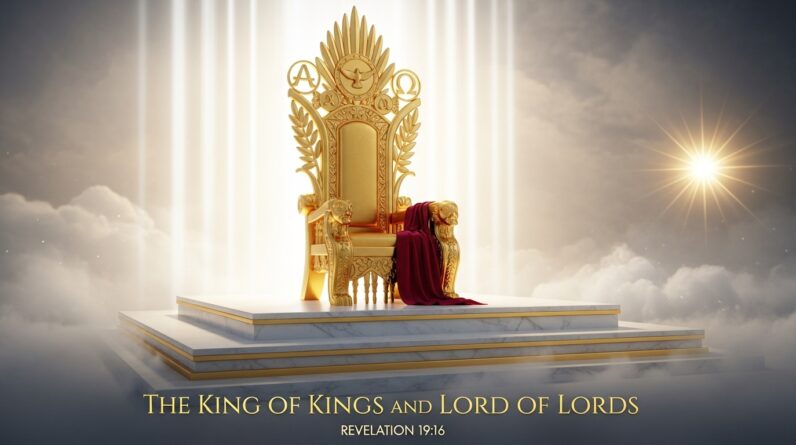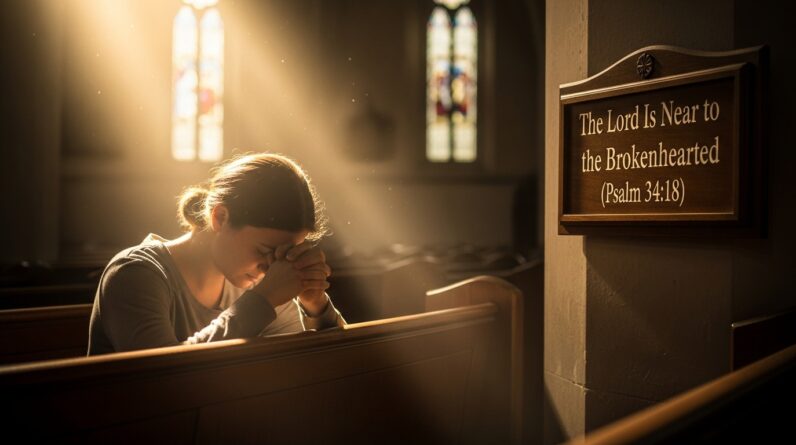In this enlightening article, we will explore the intriguing symbolism of colors in the Bible, specifically focusing on Revelation 21:19-20. Through these powerful verses, we gain a deeper understanding of how colors are used to convey profound meanings and spiritual significance. Prepare to embark on a captivating journey as we uncover the hidden messages behind the vibrant hues mentioned in this biblical passage. Let’s dive into the rich tapestry of color symbolism and unravel the mysteries that lie within.
1. The Importance of Color Symbolism in the Bible
1.1 The Bible’s Use of Symbolism
The Bible is filled with rich and powerful symbolism that adds depth and layers of meaning to its narratives. From metaphors to allegories, the use of symbolism in the Bible helps convey profound truths and spiritual messages in a way that engages the reader’s imagination and understanding. Colors, in particular, play a significant role in this symbolic language.
1.2 Significance of Color Symbolism in Religious Texts
Colors have long been associated with emotions, feelings, and ideas. In religious texts, including the Bible, colors are often used symbolically to evoke specific meanings and convey spiritual truths. Understanding the symbolism of colors in the Bible can deepen our interpretation and appreciation of biblical stories, prophecies, and teachings.
1.3 Visual Language in Biblical Narratives
The Bible is a remarkable book that engages readers on multiple levels. While its primary purpose is to convey divine truths, it does so using a variety of literary devices and techniques, including symbolism. Colors serve as a visual language within the text, allowing readers to connect with the stories and messages on a deeper, more visceral level. By understanding the symbolic meanings of colors, we can unlock a hidden layer of meaning in biblical narratives.
2. The Book of Revelation and Its Symbolic Nature
2.1 Overview of Revelation 21:19-20
Revelation 21:19-20 is a passage that describes the foundations of the New Jerusalem. It specifically mentions twelve different precious stones, each representing a specific color. These colors hold symbolic significance and contribute to the underlying themes and messages of the book.
2.2 Symbolism in the Book of Revelation
The Book of Revelation is renowned for its highly symbolic language and vivid imagery. It uses symbolism to convey complex theological concepts, prophetic insights, and spiritual truths. The colors mentioned in Revelation 21:19-20 are no exception, each carrying profound symbolic meaning that adds to the overall message of hope, redemption, and divine glory.
2.3 Interpretation of Color Symbolism in Revelation 21:19-20
Interpreting the symbolism of colors in Revelation 21:19-20 requires a careful study of both the specific colors mentioned and their broader biblical significance. Each color carries its own distinct symbolism, and when combined, they create a tapestry of meaning that enhances our understanding of the heavenly city and its profound implications for believers.
3. The Colors Mentioned in Revelation 21:19-20
3.1 The Color Gold
Gold is a symbol of divinity, purity, and eternal value. In the biblical context, gold represents the glory and majesty of God, as well as His righteous and unchanging nature. It signifies the enduring and incorruptible nature of the heavenly city.
3.2 The Color Jasper
Jasper, often described as a translucent or opaque stone, symbolizes purity, protection, and spiritual enlightenment. It represents the unblemished nature of God’s presence and His ability to shield and guide His people.
3.3 The Color Sapphire
Sapphire, a brilliant blue gem, is associated with loyalty, wisdom, and heavenly blessings. It symbolizes the divine favor and abundance that will be bestowed upon the faithful within the New Jerusalem.
3.4 The Color Chalcedony
Chalcedony, a mixture of various colors, represents diversity, unity, and the harmonious coexistence of God’s people. It symbolizes the multicultural and inclusive nature of the heavenly city, where individuals from all walks of life are united in worship and fellowship.
3.5 The Color Emerald
Emerald, a vibrant green gemstone, is often associated with fertility, rebirth, and abundance. It represents the spiritual rejuvenation and supernatural provision that believers will experience within the New Jerusalem.
3.6 The Color Sardonyx
Sardonyx, a banded or striped variety of onyx, signifies strength, courage, and victory. It symbolizes the triumph over adversity and the assurance of God’s faithfulness to His people.
3.7 The Color Sardius
Sardius, a bright red gemstone, is a symbol of passion, righteousness, and the atoning blood of Christ. It represents the sacrificial love and redemption that Jesus offered on the cross for the salvation of humanity.
3.8 The Color Chrysolite
Chrysolite, a golden-green gemstone, represents growth, renewal, and spiritual transformation. It symbolizes the continuous development and sanctification of believers within the New Jerusalem.
3.9 The Color Beryl
Beryl, a gemstone that can range in color from blue to green, symbolizes clarity, truth, and revelation. It represents the illumination and understanding that believers will receive in the presence of God.
3.10 The Color Topaz
Topaz, a yellow or golden-brown gemstone, symbolizes divine authority, protection, and guidance. It represents the sovereign reign of God and His provision for His people.
3.11 The Color Chrysoprase
Chrysoprase, a brilliant green gemstone, symbolizes joy, healing, and restoration. It represents the abundant life and eternal joy that believers will experience within the New Jerusalem.
3.12 The Color Jacinth
Jacinth, a deep orange or reddish-brown gemstone, represents passion, creativity, and zeal. It symbolizes the fervent worship and service that believers will offer to God in the heavenly city.
3.13 The Color Amethyst
Amethyst, a purple gemstone, is associated with royalty, spirituality, and divine wisdom. It represents the regal status and intimate communion with God that believers will enjoy within the New Jerusalem.
4. The Symbolic Meanings of the Colors in Revelation 21:19-20
4.1 The Symbolism of Gold in Biblical Context
In biblical context, gold symbolizes the glory and divinity of God. It represents His purity, righteousness, and unchanging nature. Gold also signifies eternal value and the enduring nature of God’s kingdom.
4.2 Understanding the Symbolic Use of Jasper
Jasper symbolizes purity, protection, and spiritual enlightenment. It represents the unblemished nature of God’s presence and His ability to guide and shelter His people.
4.3 Exploring the Symbolism of Sapphire
Sapphire represents loyalty, wisdom, and heavenly blessings. It symbolizes the divine favor and abundance that believers will receive within the New Jerusalem.
4.4 Unveiling the Symbolic Meaning of Chalcedony
Chalcedony signifies diversity, unity, and harmonious coexistence. It represents the inclusive and multicultural nature of the heavenly city, where individuals from all walks of life are welcomed and embraced.
4.5 Decoding the Symbolism of Emerald
Emerald symbolizes fertility, rebirth, and abundance. It represents the spiritual rejuvenation and supernatural provision that believers will experience within the New Jerusalem.
4.6 Interpreting the Symbolism of Sardonyx
Sardonyx signifies strength, courage, and victory. It symbolizes the triumph over adversity and the unwavering faithfulness of God to His people.
4.7 Unlocking the Symbolic Meaning of Sardius
Sardius represents passion, righteousness, and the atoning blood of Christ. It symbolizes the sacrificial love and eternal redemption that Jesus offered on the cross.
4.8 Analyzing the Symbolism of Chrysolite
Chrysolite symbolizes growth, renewal, and spiritual transformation. It represents the continuous development and sanctification of believers within the New Jerusalem.
4.9 Delving into the Symbolic Meaning of Beryl
Beryl signifies clarity, truth, and revelation. It represents the illumination and understanding that believers will receive in the presence of God.
4.10 Interpreting the Symbolism of Topaz
Topaz symbolizes divine authority, protection, and guidance. It represents the sovereign reign of God and His provision for His people.
4.11 Understanding the Symbolic Use of Chrysoprase
Chrysoprase represents joy, healing, and restoration. It symbolizes the abundant life and eternal joy that believers will experience within the New Jerusalem.
4.12 Exploring the Symbolism of Jacinth
Jacinth symbolizes passion, creativity, and zeal. It represents the fervent worship and wholehearted service that believers will offer to God in the heavenly city.
4.13 Unveiling the Symbolic Meaning of Amethyst
Amethyst represents royalty, spirituality, and divine wisdom. It symbolizes the regal status and intimate communion with God that believers will enjoy within the New Jerusalem.
5. The Overall Symbolic Message of Revelation 21:19-20
5.1 Understanding the Contextual Significance
Revelation 21:19-20 describes the foundations of the New Jerusalem, adorned with twelve different precious stones. The specific colors mentioned in these verses carry profound symbolic meaning that adds to the overall message of hope, redemption, and divine glory.
5.2 Analyzing the Colors as Representations
When analyzed collectively, these colors portray a vivid and awe-inspiring image of the heavenly city. They represent various aspects of God’s nature, His promises, and His relationship with His people. The colors serve as reminders of the eternal blessings, abundant provision, and transformative power that await believers in the presence of God.
5.3 Theological Interpretations of Revelation 21:19-20
The symbolic language used in Revelation 21:19-20 can be interpreted theologically in various ways. Some scholars view the colors as representations of the attributes of God, while others see them as reflections of the redeemed individuals who make up the New Jerusalem. Regardless of the specific interpretation, these verses convey a message of hope, future glory, and the fulfillment of God’s promises.
6. Personal and Spiritual Applications
6.1 Applying Color Symbolism in Devotional Practices
The symbolism of colors can be incorporated into personal devotional practices to enhance spiritual reflection and connection with God. Meditating on the symbolic meanings of the colors in Revelation 21:19-20 can deepen our understanding of God’s nature and His promises, leading to a more profound and transformative devotional experience.
6.2 Reflecting on Personal Meanings and Associations
Colors often evoke personal meanings and associations in individuals. Reflecting on how the colors mentioned in Revelation 21:19-20 resonate with our own experiences, emotions, and spiritual journey can deepen our personal connection with the biblical text. It allows us to relate to the symbolic language on a deeply personal level and find personal applications for our own lives.
6.3 Encouraging Spiritual Reflection and Growth
Studying the symbolism of colors in the Bible, particularly in Revelation 21:19-20, can be a catalyst for spiritual reflection and growth. It prompts us to delve deeper into the Word of God, seek His guidance and revelation, and apply the wisdom and insights gained from understanding these symbols to our daily lives. It encourages us to strive for spiritual transformation and a closer relationship with God.
7. Conclusion
The symbolism of colors in the Bible, particularly in Revelation 21:19-20, is a fascinating and profound aspect of biblical interpretation. Understanding the symbolic meanings of the colors mentioned in this passage allows us to unlock a deeper layer of meaning within the text and enhances our appreciation of the overarching theological themes and messages of hope, redemption, and divine glory. By exploring the symbolism of colors, we can enrich our spiritual understanding and apply these insights to our personal lives, fostering spiritual growth and an intimate relationship with God.







